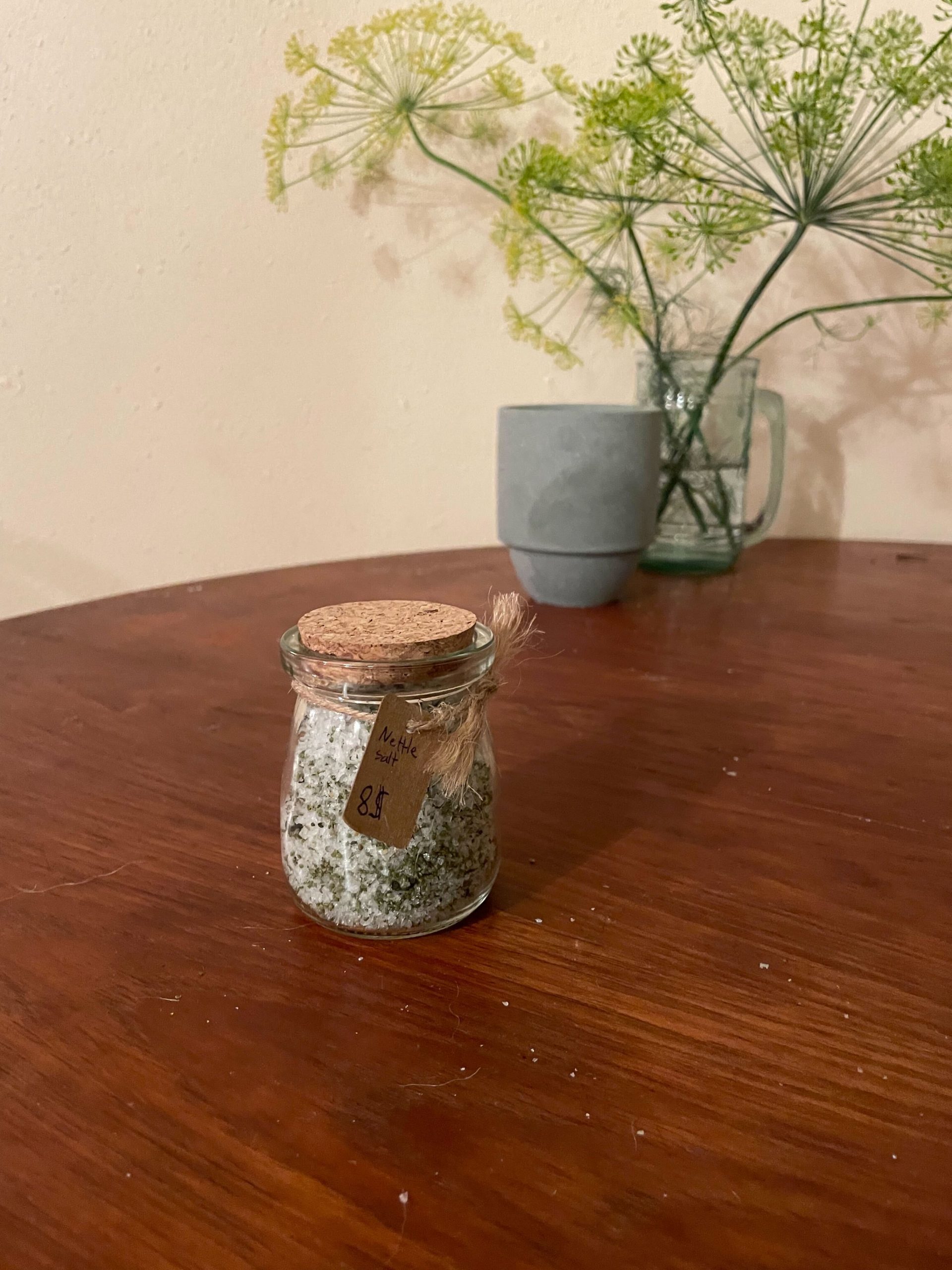Nettles (Urtica dioica) – Growing, Harvesting, and Uses
Taxonomic Data

Kingdom: Plantae, Order: Rosales, Family: Urticaceae, Genus: Urtica, Species: U. dioica

Stinging nettles (Urtica dioica) are well-known for their tiny, hair-like structures that cause a mild stinging sensation when touched. However, those who understand their properties value them as a versatile plant with medicinal, culinary, and practical applications. These hardy perennials are native to Europe and Asia but have naturalized worldwide. Their nutrient-dense leaves make them a powerhouse plant for both human consumption and ecological benefits.
Growing Conditions
- Soil: Prefers rich, well-draining soil with high organic matter.
- Light: Thrives in partial to full sunlight.
- Watering: Requires consistent moisture but does not tolerate waterlogged soil.
- Propagation: Can be grown from seed or root division; they spread quickly via rhizomes.
- Handling: Always wear gloves when planting or harvesting to avoid their sting.
- Regional Adaptability: While nettles are highly adaptable and have naturalized in many regions, they are not native to Arkansas. They grow best in temperate climates with moist, fertile soils and are commonly found in regions of North America with high rainfall and cooler temperatures, such as the Pacific Northwest and parts of the Northeast.
Nutritional Profile
Nettles are rich in nutrients, making them a valuable addition to a healthy diet. They contain:
- Vitamins: A, C, K, and several B vitamins.
- Minerals: Iron, calcium, magnesium, potassium, and silica.
- Protein: Up to 25% by dry weight—one of the highest among leafy greens. Notable proteins include RuBisCO, lectins, defensins, and various storage proteins.
- Phytochemicals: Flavonoids, polyphenols, and beta-carotene, contributing to their antioxidant and anti-inflammatory properties.
- Chlorophyll: High levels, making them beneficial for detoxification and blood health.
- Omega-3 Fatty Acids: Contains alpha-linolenic acid (ALA), contributing to its anti-inflammatory benefits and overall nutritional value.
Medicinal Uses
Stinging nettles have been used in traditional medicine for centuries and continue to be researched for their therapeutic properties.
Arthritis and Inflammation
A 2023 review in the Journal of Herbal Medicine examined nettles’ role in osteoarthritis management, highlighting their ability to reduce pain and inflammation naturally.
Benign Prostate Hyperplasia (BPH)
A 2019 study found that combined extracts of Sabal and Urtica dioica significantly reduced prostate inflammation and tissue hypertrophy, suggesting a potential use in managing BPH.
Endometriosis and Hormonal Health
Flavonoids extracted from nettles have been studied for their effects on endometriosis, showing promise in reducing inflammation and abnormal tissue growth in rat models.
Antimicrobial and Parasitic Defense
Research from 2020 found that nettle extracts demonstrated antileishmanial activity, suggesting their potential in treating parasitic skin infections.
Caution: Always consult with a healthcare professional before using nettles medicinally, particularly if pregnant, on blood thinners, or managing kidney issues.
Harvesting and Preparation
Best Time to Harvest: Pick leaves in early spring before the plant flowers. After flowering, nettles develop cystoliths—gritty particles that may irritate the kidneys if consumed.
Harvesting Tips:
- Wear Gloves: Protect your hands from stings by using gloves.
- Choose Young Growth: The top 4-6 leaves on young plants are the most tender and nutritious.
- Avoid Mature Plants: Once flowering begins, they are better suited for fiber or compost use.
The Sting
The secretion in the tiny needles (trichomes) of the stinging nettle (Urtica dioica) contains a mix of irritating chemicals designed to deter herbivores and cause a painful sting upon contact. The main compounds in the secretion include:
- Histamine – Causes an immediate inflammatory response, leading to itching and a burning sensation.
- Acetylcholine – A neurotransmitter that enhances pain perception.
- Serotonin – Can increase irritation and enhance pain.
- Formic Acid (possibly in small amounts) – Once thought to be a major irritant, but modern studies suggest its role is minimal.
- Leukotrienes – Contribute to inflammation and pain.
When you brush against a stinging nettle, the fragile silica-based tips of the trichomes break off, creating a needle-like structure that injects this cocktail into the skin, resulting in the characteristic burning, itching, and redness.
Neutralizing the Sting
Fortunately, there are some simple ways to get relief.
Neutralizing the sting involves:
- Counteracting acids (formic acid) – Using bases like baking soda.
- Blocking histamine release – Using plant compounds like those in jewelweed.
- Soothing irritation – Using mucilage-rich plants like plantain and dock.
Brief Solutions:
- Jewelweed (Impatiens capensis) contains natural antihistamines that help neutralize nettle stings.
- Baking soda paste can counteract the acidity of nettle venom.
- Plantain (Plantago major) and dock leaves (Rumex spp.) contain soothing mucilage that helps relieve irritation.
Blending these remedies ensures a quick and effective response to nettle stings.
When cooking you will also want to perform these steps:
- Blanch leaves in boiling water for 1-2 minutes.
- Drying or cooking also removes the sting, making them safe to eat.
Culinary Uses
Nettles are a nutrient-packed alternative to spinach and other greens, with a slightly nutty, earthy taste.
Nettle Rennet for Cheese Making
A lesser-known use of nettles is as a natural plant-based rennet for curdling milk. This makes them a great option for vegetarian cheese-making.
How to Make Nettle Rennet:
- Collect a large bunch of young nettle leaves. Use gloves, do not handle nettles without gloves.
- Chop them and place in a pot with 2 cups of water.
- Add 1 tsp salt and simmer for 30 minutes.
- Strain the liquid and use about 1/4 cup per gallon of milk to coagulate it.
- Proceed with standard cheese-making methods.
Nettle Pesto Recipe
Ingredients:
- 2 cups fresh nettle leaves (blanched and chopped) Use gloves, do not handle nettles without gloves.
- 1/2 cup grated Parmesan cheese
- 1/2 cup toasted pine nuts or walnuts
- 2 garlic cloves (minced)
- 1/2 cup extra-virgin olive oil
- Juice of 1 lemon
- Salt and pepper to taste
Instructions:
- Blanch and chop nettles.
- Blend all ingredients in a food processor until smooth.
- Store in the refrigerator and use as a pasta sauce or spread.
Nettle Salt Recipe
Ingredients:
- 1 cup dried nettle leaves
- 1/2 cup coarse sea salt
Instructions:
- Dry nettles completely after blanching.
- Grind together with salt in a mortar and pestle or food processor.
- Store in an airtight container for a mineral-rich seasoning.
Ecological Benefits
- Pollinator Support: Provides food for butterflies, including the Red Admiral (Vanessa atalanta).
- Soil Health: High in nitrogen, nettles make an excellent compost booster.
- Wildlife Habitat: Acts as a shelter for beneficial insects.
Conclusion
Whether for nutrition, medicine, cheese-making, or soil improvement, stinging nettles are an invaluable plant to cultivate. Proper handling and harvesting make them easy to incorporate into daily life, offering a natural and sustainable resource.

Nettle Salts with Dill Flowers Photo by: Ruby Adkinson
References:



